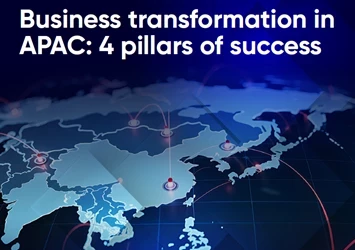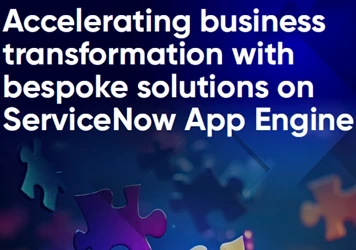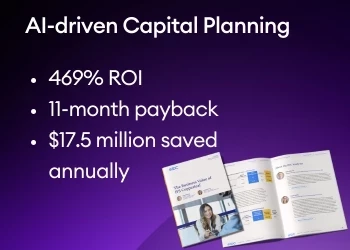How governance drives business transformation at Meta
Stephane Deblock, head of process and change excellence – finance innovation at Meta, sheds light on how he approaches governance and the role it plays in driving transformational change
Add bookmark
Governance frameworks help organizations prioritize digital transformation projects and ensure strategic alignment with larger business objectives. At tech giant Meta, the company that owns WhatsApp, Facebook and Instagram, governance has become a vital component of its finance transformation.
 Stephane Deblock, head of process and change excellence – finance innovation at Meta, recently sat down with PEX Network at OPEX Week 2023 to discuss why governance is essential to business transformation success. During the conversation, he also shared critical considerations for developing effective governance frameworks and explains why early stakeholder engagement is vital.
Stephane Deblock, head of process and change excellence – finance innovation at Meta, recently sat down with PEX Network at OPEX Week 2023 to discuss why governance is essential to business transformation success. During the conversation, he also shared critical considerations for developing effective governance frameworks and explains why early stakeholder engagement is vital.
These days, Stephane is focused on leading Meta’s finance innovation team, a unit tasked with driving operational excellence within the finance function. In addition to upskilling finance workers with process excellence skills, the finance innovation team also advises on major strategic projects offering subject matter expertise on technology implementation, change management and process optimization.
Before joining Meta, Stephane led operational excellence initiatives at a variety of organizations including Kaiser Permanente, Bio-Rad Laboratories, UC Berkeley and Pfizer. He pulls from that experience and more as he outlines his approach to developing governance frameworks and driving change in complex, high-pressure environments.
PEX Network: Why is governance an essential ingredient for business transformation?
Stephane Deblock: Governance brings specific structure, direction and accountability to business transformation. It helps us ensure that what we are working on makes sense for the business and our industry, and that transformational projects align with the organization’s core objectives.
It can also provide guidance on prioritization. Sometimes, we have so many things we want to work on, but we can be unclear on what to prioritize. How can we make sure we are working on the right project at the right time and with the right resources?
A good governance structure provides direction on how to answer those questions and helps us do our work more efficiently.
PEX Network: What are some critical considerations organizations need to keep in mind as they build out or reimagine their governance frameworks?
SD: As mentioned, governance frameworks ensure business transformation strategies align with the priorities of the organization.
Secondly, governance outlines different types of roles and responsibilities. In addition to defining your own role, you must delineate the role of sponsors, decision makers, subject matter experts, stakeholders, etc.
Identifying, understanding and ultimately gathering insights from the people within the governance framework is essential to measuring impact and making sure you are working on the right things. It is about aligning your strategy to your own responsibilities, while also enabling flexibility and adaptability.
The past few years have been crazy for everyone. A lot has happened that we did not anticipate such as the Covid-19 pandemic, Russia’s invasion of Ukraine and economic turbulence. It is important for us to be adaptable and pivot when necessary. By acquiring input from different stakeholders within our governance model and using those insights to prioritize what to do next, we can do this in a smart, evidence-driven manner.
PEX Network: What are some best practices for communicating new governance practices and driving adoption?
SD: The first thing you need to do is explain the benefits of the governance model. Explain why are you implementing a governance framework so that people truly understand that you are not adding another layer of bureaucracy or looking to increase complexity. The governance model is there to help you adapt quickly, pivot quickly and ensure your work is aligned to the organization's mission and visions.
Secondly, it is vital to engage with different stakeholders. You need to do more than just assign roles and responsibilities. Engage them at the beginning, right when you are setting up the governance model, so everyone has a say in it. This will help drive adoption.
As operational excellence and transformation leaders, it is our responsibility of to lead by example. Explain the benefits of why we are doing it and then demonstrate those benefits.
PEX Network: Having led transformational initiatives at multiple companies, can you tell us about a time when you faced especially high levels of change resistance, how you overcame this obstacle and what you learned in the process?
SD: I have and it relates to a project I spoke about at last year’s OPEX Week. It actually won first prize for the Best Enterprise-Wide Transformation Project at OPEX Week 2022.
It was a very complex initiative for healthcare provider Kaiser Permanente. Its mission is to provide quality and affordable patient care. If we rewind to December 2020, the height of the Covid-19 pandemic when there was a lot of uncertainty and chaos, it was paramount that our users – Kaiser’s doctors, nurses and medical assistants – were focused on taking care of patients. It was imperative that we, the digital transformation team, did not cause any disruption that might distract the medical staff from their work, especially at that time.
In the center of this tumult, we were going live with a new human capital management (HCM) system and had to enroll hundreds of thousands of hospital workers. We needed to figure out how to roll out a new HCM with minimal-to-no disruption to ensure everyone remained focused on patient care.
Thankfully, we did not go into this situation fully unprepared. From the very beginning, long before the Covid-19 pandemic, we had engaged with stakeholders to try to understand their requirements, what they wanted from the solution and build out our long-term change management plan.
When we were going live in December of 2020, we decided to be very mindful of what and when each component should be released. To make things as frictionless as possible, we identified which services needed to be rolled out right away and which ones could wait. Then, eventually, we rolled out the new models in their entirety once things had settled down.
This was a very challenging project which was big in scope and we grappled with a lot of uncertainty. But we had a business to run and a goal we needed to meet. It was a difficult year but we were able to really work on each challenge one by one and were ultimately successful in delivering value to the business.
I think the moral of the story is the importance of engaging different stakeholders of all levels as early as possible and understanding their different needs. Incorporating these findings into the design of the solution will make things much easier when it comes to adoption. You have to co-create the solution together.
























